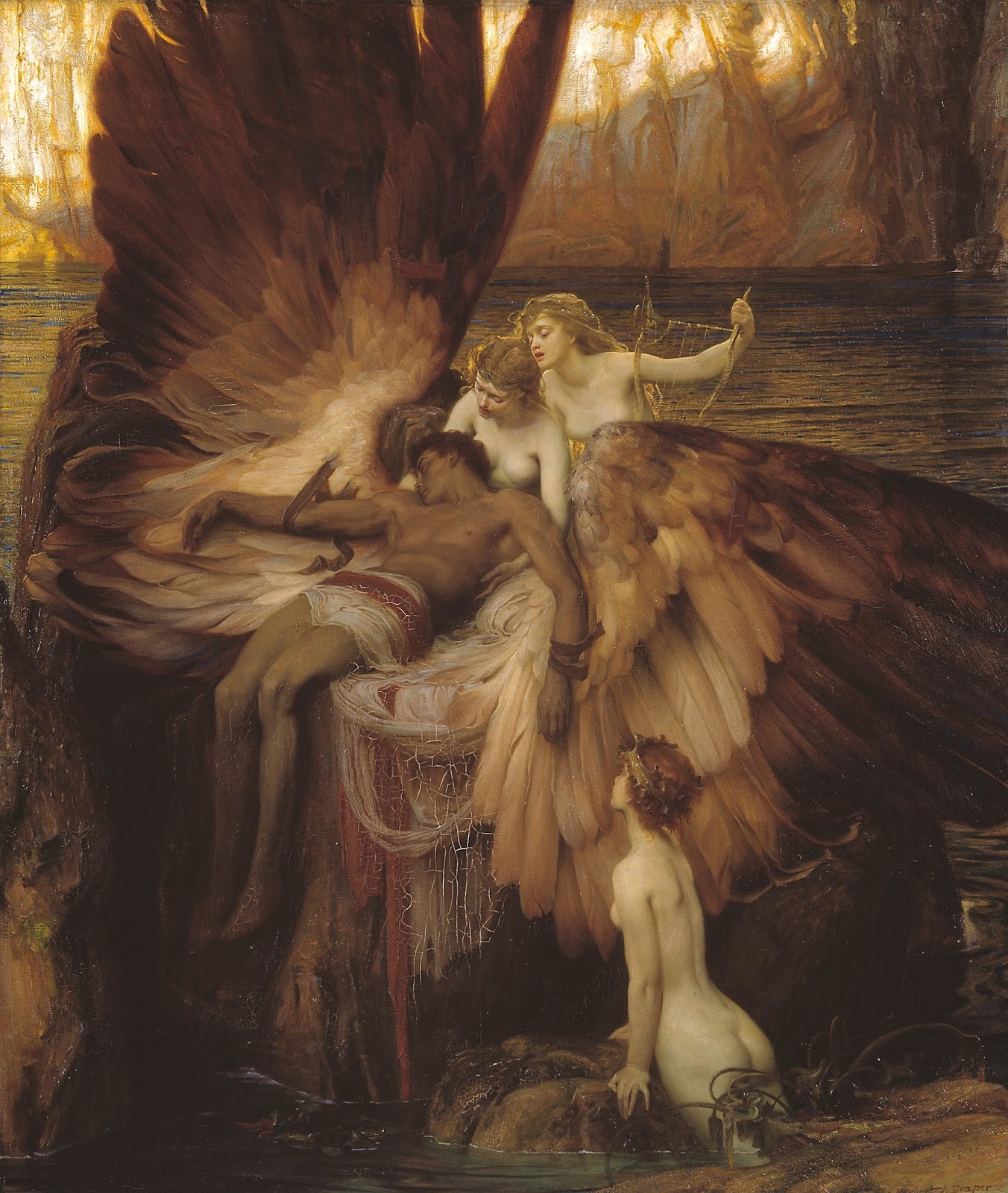Herbert Draper: The Lament for Icarus (1898)
(Tate Britain, London, UK)
A painting based upon the Greek legend of Daedalus and his son Icarus. Daedalus was a craftsman who built the labyrinth for King Minos of Crete so Minos could imprison the Minotaur (a creature which had the body of a man and the head of a bull - the child of the Pasiphaë, wife of king Minos, and the Cretan bull). The minotaur was eventually killed by the hero Theseus. Theseus managed to survive the labyrinth with the use of a ball of string which Theseus got from Ariadne, the daughter of king Minos. Ariadne got the string from Daedalus and when king Minos found out, he imprisoned Daedalus and his son Icarus. Daedalus made wings for himself and his son from feathers and wax and instructed his son Icarus 'neither fly too low nor too high, so the sea's dampness would not clog his wings or the sun's heat melt them'. Icarus however ignored his father's instructions not to fly too close to the sun, whereupon the wax in his wings melted and he fell his death into the sea (daedalus survived and managed to escape). Draper shows us the dead Icarus while a group of nymphs are mourning for his death. In contrast to the tale Draper shows Icarus with his wings fully intact. Painting from 1898.
